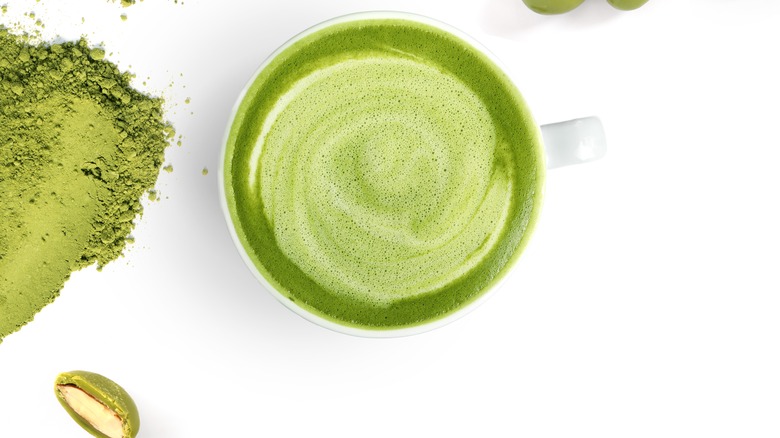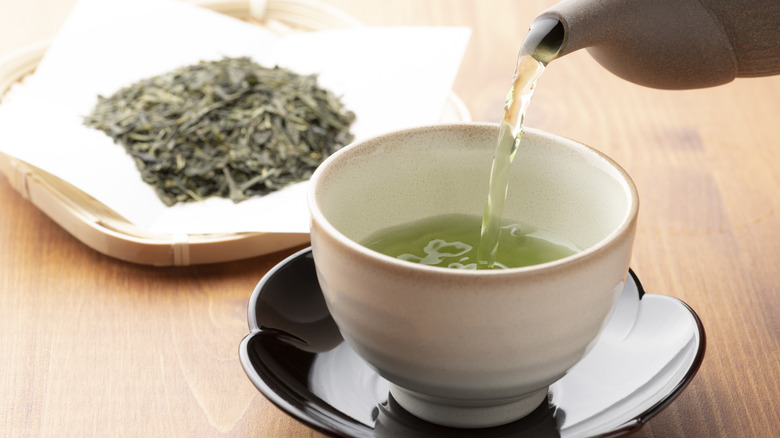Is Matcha The Same Thing As Green Tea?
The green color in food is often associated with healthy eating or a bitter taste, depending on your persuasion. Matcha or green tea, on the other hand, seems to have escaped this perception, perhaps because it is visually pleasing when used in drinks like matcha smoothies and gives desserts an interesting flavor.
For many of us, matcha (which literally translates to powdered tea in Japanese) and green tea are both green, caffeinated drinks. So it can be confusing when a drink has the words matcha and green tea in the title, like Starbucks' iced matcha green tea latte. Isn't that redundant?
Deep diving into this a bit more, matcha and green tea are similar in the sense they both come from the Camellia sinensis plant. This is not a unique tea plant; it is the same plant used for other types of tea, such as black and oolong tea. However, there are differences in how matcha and green tea are cultivated, which means there are differences in taste, texture, and even color.
Matcha and green tea are grown and harvested differently
Matcha is grown in the shade toward the last few weeks of harvest, while green tea is grown under the sun. Protecting matcha from the sunlight forces the plant to slow its growth and increase the chlorophyll levels in the leaves to compensate. This is what gives matcha its signature vibrant green color. In comparison, green tea, despite its name, has a brownish undertone.
Matcha also has a shorter production process compared to green tea. The leaves are harvested by workers who know how to pick the best leaves. The stems and veins are removed from the leaves and then ground into a fine powder befitting its name. This is why you're unlikely to find matcha tea leaves, and the concentrated tea powder means you will only need ½ to 1 teaspoon per cup.
In comparison, green tea goes through a more extended processing method. The leaves are picked, steamed, and dried before oxidation occurs. There is no step to grind the tea into powder, which is why green tea comes in tea bags or loose-leaf forms instead.
Matcha's powdered form means it can be more versatile
Both matcha and green tea can be prepared hot or cold. To make a hot cup of matcha, it helps if you have a whisk to evenly dissolve the powder in hot water. This will result in a smooth rather than a clumpy drink with mouthfuls of bitter sips. For a cold matcha drink, shake it with water and ice to dissolve.
Green tea needs to be steeped in water at 180 to 185 degrees Fahrenheit for two to three minutes. A common mistake is to brew the leaves at boiling hot water, which releases tannins from the leaves and makes the drink bitter. This underlines a key difference between matcha and green tea: Matcha does not have to be steeped since there are no tea leaves, so it is as good as an "instant" drink.
Green tea is much more subtle and has more earthy undertones, while matcha is typically more robust and sweeter in flavor. Drinking matcha and green tea can be an acquired taste, so experiment with temperatures and methods to see if that makes a difference. Even if you cannot fully appreciate or differentiate the taste of matcha and green tea, the powdered texture of matcha means it is a more versatile ingredient than just a tea drink. It can be used unexpectedly as dusting on chocolate balls or infusions in cocktails.


